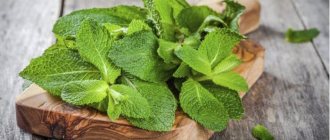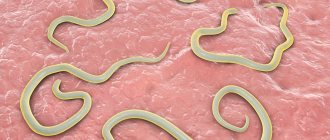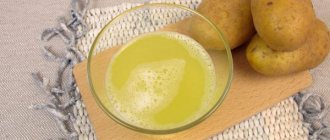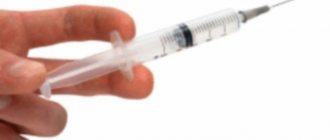Drug therapy
The drugs that are used in the therapy process are quite numerous and are divided into several main categories:
- Drugs from the category of antisecretory agents.
- Preparations containing bismuth in their composition.
- Antibiotics.
- Antiprotozoal drugs.
- Medicines from the prokinetic category.
- Antacids.
Read more about medications for treating ulcers here...
Antisecretory drugs
It is the drugs from this category that are actively used for illness. Appointments can be made here:
- M-anticholinergics;
- H2 receptor blockers;
- proton pump inhibitors.
M-CHOLINOLYTICS
Drugs in this category include:
- "Atropine";
- "Platifillin";
- "Pirenzepine";
- "Gastrocepin".
In the recent past, the drugs were actively used in treatment, but today they are gradually being replaced by more modern drugs. The antisecretory effect of taking these drugs is small, but their use is accompanied by many adverse reactions - tachycardia, dry mouth, etc.
H2 RECEPTOR BLOCKERS
More effective drugs in this category are H2 receptor blockers. Today, doctors have several new generation medications at their disposal (the names of medications are given as informational):
- "Cimetidine";
- "Ranitidine";
- "Famotidine";
- "Nizatidine";
- "Roxatidine."
The use of funds has a significant impact on the course of the disease:
- there is an increase in the overall percentage of scarring of ulcers;
- the duration of treatment is reduced;
- the percentage of cases requiring surgical intervention is reduced.
It is necessary to take H2 receptor blockers for a long time with a gradual reduction in dose. Abrupt withdrawal of the drug threatens increased acid production and premature recurrence of the ulcer.
PROTON PUMP INHIBITORS
This category includes the following tools:
- "Omeprazole" ("Omez");
- "Lansoprazole";
- "Pantoprazole";
- "Rabeprazole";
- "Esomeprazole."
Medicines help reduce acid production, as well as eliminate clinical symptoms of ulcers such as heartburn and pain.
"Omez" is used quite often in the treatment of ulcers. After just three days of using the drug “Omez”, an improvement in the general condition is noted - the pain goes away and the painful heartburn stops. Two weeks after the start of treatment, studies show the beginning of scarring. Complete healing of the wound surface of the stomach is observed after two months of using Omez.
For ulcers, Omez is prescribed in the form of capsules. In emergency situations, it can be administered intravenously, but the drug must be administered by a specialist.
Omez should be taken about 20 minutes before meals. But you can also drink while eating. Traditional regimen for taking the drug "Omez":
- one capsule per day;
- in case of exacerbation of the pathology, two Omez capsules are prescribed for the morning dose.
The maximum duration of taking Omez is no more than two months.
Read more about the dosage regimen here...
Medicines containing bismuth
An effective remedy used in the treatment of pathology are preparations with bismuth. And most often, ulcer therapy is carried out using the following compounds:
- "Tribimol";
- "Pilocid";
- "Ventrisol";
- "Trimo";
- "De-Nol."
Tablets for stomach ulcers "De-Nol" are widely used in the treatment of ulcers. When taken, De-Nol forms a colloidal mass that is evenly distributed on the surface of the mucosa. Ulcers are protected from exposure to aggressive substances for at least several hours.
“De-Nol” also helps to reduce the concentration of acid, returning the gastric composition to the permissible pH level.
Taking the drug "De-Nol" stimulates the formation of bismuth chelate compounds, which have a protective effect on the surface of existing ulcers. Additionally, “De-Nol”, interacting with gastric mucus, forms a special complex. And this compound is much more effective against hydrogen ions than regular stomach mucus.
In addition, “De-Nol” helps reduce the activity of the digestive enzyme pepsin, and also manifests itself as an excellent gastrocytoprotector. "De-Nol" is actively used in the treatment of ulcers caused by Helicobacter pylori infection.
You can take De-Nol in two ways:
- In the morning (before breakfast) and in the evening (before dinner) half an hour before eating.
- Four times a day - before breakfast, lunch, dinner and before bed.
Prokinetics
Most often, pathology therapy includes the use of the following drugs:
- "Coordinax";
- "Motilium";
- "Cerucal".
Medicines must be taken strictly before meals up to four times a day.
Prokinetics help:
- stimulating the motor function of the stomach;
- elimination of dyspeptic symptoms such as nausea and vomiting;
- relieving heartburn;
- eliminating the feeling of heaviness in the stomach;
- relieving unpleasant sensations.
It is necessary to take prokinetics as part of complex therapy, since as independent agents they do not have any effect on the course of the ulcer.
Drugs from the category of antacids
Antacids are designed to quickly eliminate such a serious condition as heartburn. At the same time, the drugs also reduce the existing pain syndrome, since they have adsorbent and astringent properties.
Taking antacids daily for more than fourteen days in a row is not recommended, since there is a high likelihood of side effects.
Recommended to use:
- "Almagel". Depending on the form of release, you need to take from one to three doses four times a day after meals.
- "Gastal." Take the drug up to six times a day after meals (after an hour).
- "Gelusil". The dosage regimen looks like this: up to six times a day, an hour after meals.
- "Maalox." Take one sachet up to four times a day, one and a half hours after meals.
- "Phosphalugel". Take one dose four times throughout the day.
The name of the drugs is probably familiar to everyone. But peptic ulcer disease cannot be treated solely by taking antacids. Medicines are used as part of combination therapy.
Schemes for drug treatment of stomach ulcers
Of course, all the medications described above are not prescribed en masse or in random order. Gastroenterologists use several drug regimens to treat gastric ulcers. The choice of a specific treatment regimen is determined by the number of ulcerative defects, duration of the disease, experience of previous treatment and many other factors.
ATTENTION! The presented diagrams are for informational purposes only. Before use, consult a specialist. Self-medication is dangerous to health.
Triple first-line eradication scheme (duration – 4-6 weeks with repeat gastroscopy):
- Omeprazole 20 mg/day, or lansoprazole 30 mg/day, or pantoprazole 40 mg/day, or esomeprazole 20 mg/day, or rabeprazole 20 mg/day.
- Clarithromycin – 0.5 g 2 times a day.
- Amoxicillin – 1 g 2 times a day.
Scheme of second-line eradication quadruple therapy:
- Omeprazole 20 mg/day, or lansoprazole 30 mg/day, or pantoprazole 40 mg/day, or esomeprazole 20 mg/day, or rabeprazole 20 mg/day.
- Bismuth tripotassium dicitrate - according to instructions.
- Metronidazole – 0.5 g 3 times a day.
- Tetracycline – 2 g/day.
These schemes are prescribed in most cases. These may vary depending on H. pylori resistance to antibiotics, rate of ulcer healing, and patient characteristics.
Additional medications
Therapy of pathology, in addition to the drugs already discussed, involves taking the following drugs:
- Painkillers. This could be "Baralgin", "Ketorol".
- Antispasmodics – “No Shpa”, “Drotaverine”.
VITAMINS FOR ULCERS
The following vitamins will be especially useful:
- Vitamins A and E. Tocopherol (vitamin E) must be taken morning and evening, supplementing the intake with stomach-soothing agents. Retinol (vitamin A) protects the stomach from the development of peptic ulcers due to stress.
- Vitamins C and B6. Ascorbic acid increases immune defense, and a lack of vitamin B6 increases the risk of ulcer formation.
Symptoms and signs
The main initial symptom, which suggests the development of a peptic ulcer in the digestive tract, is pain. Pain may manifest itself with the following features:
- frequent tingling;
- nagging pain or other similar sensations in the upper abdomen;
- pain may worsen at night.
This should be regarded as the body's first signal that a stomach ulcer could be causing it. Symptoms of exacerbation are also observed when consuming alcoholic beverages, including spicy foods in the diet, and frequent physical activity. Even extended intervals between meals act as an aggravating factor due to the erosion of the ulcer by gastric juice.
Note: sometimes when consuming certain foods, pain disappears almost completely, which forces the patient to completely exclude the possibility of having the disease.
In addition to the described pain, other symptoms may occur that are caused by a stomach ulcer. The following pathological conditions are considered alternative symptoms:
- The presence of constant or spontaneous heartburn. It may appear after a short period of time from the end of a meal (about 2 hours).
- Belching with an acidic taste. Also accompanied by a small release of food particles, this phenomenon often occurs uncontrollably.
- Nausea, sometimes it goes away along with gag reflexes.
- Vomiting brings relief, which may indicate that the patient has a stomach ulcer.
- Symptoms in patients in the early stages of peptic ulcer disease are characterized by a chronic state of bloating.
- Frequent unexplained constipation.
- A state of heaviness is noted after eating.
- A person’s sense of appetite increases, and at the same time a feeling of hunger quickly sets in. Food is digested very quickly.
- Presence of plaque on the tongue.
- Sweating in the palms and other areas increases.
In addition to the above symptoms, pain may be felt in the epigastric region, which is caused by a stomach ulcer. Symptoms in some cases may be completely absent or not very pronounced.
Statistics indicate a 25% chance of developing a stomach ulcer asymptomatically, which can be fatal if diagnosed too late.
How to treat peptic ulcer
Pathology therapy involves an integrated approach that combines drugs. The treatment regimen depends on the medical history.
COMPLEX THERAPY
Complex therapy of pathology looks like this:
- A combination of bismuth preparations and antacids may be prescribed. It has enveloping properties, i.e. cover the surface of the mucous membrane, protecting it from the negative effects of pepsin and hydrochloric acid.
- A combination of proton pump blockers (PPBs) and H2 receptors is also used. This reduces secretion production, relieving pain.
- Antibiotics. They help destroy existing infection by suppressing the development of bacteria.
This type of treatment is called triple therapy. At an early stage of the disease, it can be treated using the simplest scheme, including drugs such as Amoxicillin, Clarithromycin and one of the representatives of the STD category. If there is no improvement, the scheme can be strengthened.
ERADICATION THERAPY
One of the causes of peptic ulcer is the presence of Helicobacter pylori infection in the stomach. The bacterium is able to survive in the aggressive environment of the stomach, which allows the microorganism to create extensive colonies on the walls of the stomach. And in this case, so-called eradication therapy helps to cope with the pathology.
Pathology therapy involves two stages:
- The first stage of treatment is carried out using proton pump inhibitors (Omeprazole) in combination with antibiotics (Metronidazole and Clarithromycin). Admission period is a week.
- The second stage is assigned only if the first step does not produce results. A combination of the drugs Metronidazole, Tetracycline, a proton pump inhibitor and a bismuth-based drug is prescribed here. Duration of treatment is two weeks.
To alleviate the side effects of taking high doses of antibiotics, drugs that coat the stomach walls are additionally used.
QUADROTHERAPY PATHOLOGY
Quadruple therapy is a more effective treatment option for Helicobacter pylori infection, but it can only be used if there is no effect from eradication therapy.
Quad therapy of the disease includes:
- drug "De-Nol";
- proton pump or H2 receptor blocker;
- combination of two antibiotics;
- antibacterial agent "Nifuratel".
It is this type of treatment that gives the maximum effect, destroying up to 98% of all bacteria.
Drug treatment of stomach ulcers is no different from the treatment of duodenal ulcers. In both cases, measures are aimed at eliminating the causes and symptoms.
Main groups of medications
Ulcerative damage to the walls of the digestive organs is a rather complex pathological process, the treatment of which is carried out over a long period of time, and maybe for the rest of one’s life. Drug therapy is selected taking into account whether the ulcer is bacterial in nature. Usually, for stomach and duodenal ulcers, antibiotics, antacids, hepatoprotectors, as well as antiallergic drugs, antispasmodics and a number of other medications are prescribed. The following drug groups are predominantly prescribed for the treatment of ulcers.
Antibiotics
In most situations, the disease is caused by Helicobacter pylori bacteria or is a complication of chronic gastritis. If the pathology is bacterial in nature, then the first step is to prescribe antibiotics that destroy pathogenic microorganisms. Doctors usually prescribe Amoxicillin, Tetracycline, Metronidazole, Clarithromycin.
Antacids
Helicobacter Pylori bacteria feed on epithelial cells, infecting the environment with their toxins, which increase the acidity of gastric juice. As a result, the concentrated juice begins to corrode the mucous membrane, and wounds form. To eliminate the activity of hydrochloric acid, as well as to detoxify the body and protect the stomach, antacids are prescribed. The most popular medications are:
- Maalox;
- Reni;
- Gastal;
- Phosphalugel.
Antacids help quickly cope with unpleasant symptoms such as pain, heartburn, and belching.
Hepatoprotectors
In order to restore the inflamed gastric mucosa, as well as protect it from the effects of acid, hepatoprotectors are prescribed. The principle of their action is to cover the surface of the stomach with a durable protective film. The drugs also relieve pain, reduce inflammation and help reduce bacterial activity. Gastroprotectors for stomach ulcers include the drugs De-Nol, Sucralfate, Smecta, Solcoseryl.
Antihistamines
Drugs in this group are aimed at blocking histamine H2 receptors, thereby reducing the acidity of gastric juice and reducing the inflammatory process. There are several generations of antihistamines, but most often second generation tablets are used to treat ulcers, which include Ranitidine, Famotidine, Nizatidine. The popular drug Cimetidine is almost never used for treatment today due to a large list of side effects.
Proton pump inhibitors (PPIs)
This type of antisecretory drugs have the most pronounced effect aimed at reducing the formation of gastric juice and pepsin. Just 20 mg of the most effective PPI, Omeprazole, helps reduce the production of hydrochloric acid by 80%. Also, proton pump blockers contribute to an improved and accelerated effect of antibiotics. In addition to Omeprazole (Omez), Lansoprazole and Rabeprazole tablets can be prescribed.
Preparations based on vismus
Preparations containing vismus form a protective film that prevents the aggressive effects of gastric juice on the mucous membrane. Such medications inhibit the activity of bacteria, improve blood circulation, and increase resistance. However, medications do not change the properties of gastric juice. This group of drugs includes Vikalin tablets, Bismuth nitrate, Sucralfate.
Reparants
To restore damaged tissues during an exacerbation, reparants are prescribed that have a wound-healing effect, improve blood supply and tissue trophism. The most commonly prescribed drugs are Gastrofarm, Methiuracil, sea buckthorn oil, and injections of aloe extract.
Antispasmodics
An exacerbation of an ulcer is often accompanied by severe spasms and a burning sensation of the mucous membrane. To eliminate these unpleasant sensations, analgesics and antispasmodics are prescribed: No-Shpa, Spazmalgon, Riabal. You should absolutely not take Diclofenac, Paracetamol or Aspirin for stomach pain, as this will provoke an exacerbation of the pathological process.
"Home" treatment for ulcers
How to treat stomach ulcers at home? First of all, during an exacerbation, you need to completely stop eating for a couple of days. This will allow the opened ulcer to calm down. After this, you can use “home” methods.
POTATO JUICE
Freshly squeezed potato juice perfectly relieves inflammation and promotes the healing of ulcers. Dosage regimen: half a glass twice a day (always before meals). The course of treatment is at least a month.
BEET JUICE
Another therapy recipe suitable for treating ulcers. Fresh vegetables need to be chopped using a grater and squeezed out the juice using gauze folded in several layers.
Take the drink according to the following scheme:
- Dilute the juice with boiled water in a 1:1 ratio.
- Take half a glass before starting a meal (about thirty minutes).
FLAX-SEED
You can use flax seeds at home. A decoction must be prepared from them.
- For two glasses of boiling water you need to take two spoons of the product. It is best to use a thermos for infusion.
- The infusion should stand all night. In the morning, bring it to a boil and immediately remove from heat.
The course of treatment is one third of a glass 30 minutes before meals.
Along with a decoction of flax seeds, you can eat one beaten egg white. After this, you can start eating only after an hour and a half.
EGG AND OIL MIXTURE
An excellent recipe to use at home. The product preparation process is as follows:
- Take an egg white and a spoonful of powdered sugar and olive oil.
- Whisk thoroughly.
Dosage regimen: spoon in the morning on an empty stomach. The course of treatment is until the painful symptoms are completely relieved.
The egg-oil mixture is a fairly effective method, since relief comes after just a couple of doses of the product.
ALOE AND HONEY MIXTURE
To prepare the product you need:
- Mix aloe pulp, strong alcohol and liquid honey in equal parts.
- It will take a day to infuse.
The course of treatment is one and a half months, a large spoon every day.
POTATO JUICE, PROPOLIS AND SEA BUCKTHORN OIL
The course of treatment is quite long, since it involves taking medications in stages.
The first thing you need to take is potato juice. The regimen is one hundred grams twice a day. The course of treatment is a week.
After this, treatment must be continued with propolis tincture. You can make it yourself, or purchase it from a pharmacy chain. Usage regimen: twenty-five drops per glass of water three times during the day (after meals). The course of treatment is twenty-one days.
The third step is taking sea buckthorn berry oil. The product can be prepared at home or purchased ready-made. Scheme: Take a small spoon three times a day. The course of treatment is exactly one month.
It is advisable to practice this course of therapy twice a year.
The most effective folk remedies
Many people suffering from stomach ulcers prefer to treat themselves at home, especially if the disease is at an early stage. In most cases, herbs are used as raw materials for such medicines. Below will be presented the most effective folk recipes.
Plantain
A variety of drugs are prepared from this plant to help with stomach ulcers, for example:
- Infusion. It is prepared in the evening. To do this, pour 1 large spoon of chopped fresh or dried plantain into a small thermos and pour in 200 mg of just boiled water. This infusion is drunk in 3 doses over 30 minutes. before meals;
- Fresh Juice. To do this, you will need fresh plantain leaves, from which the juice is squeezed. It is taken 1 large spoon three times a day, a third of an hour before meals, and it is recommended to first dilute the juice with water and mix with honey;
- Seeds. The ripened seeds must be ground in a coffee grinder. The resulting mass should be taken a pinch on an empty stomach for 4 weeks, washed down with the required amount of water.
Herbal infusions
There are various herbal recipes for treating stomach ulcers, for example:
- chamomile, fireweed, linden blossom, fennel fruit;
- chamomile, St. John's wort, licorice and valerian root, immortelle;
- marshmallow, wheatgrass and licorice root, as well as chamomile and fennel seeds;
- yarrow, cudweed, oak bark, licorice root and marshmallow;
- mint, linden blossom, fennel and flax seed.
As a rule, all components included in the collection are taken in equal parts. One large spoon of the resulting mixture is poured with 200 ml of just boiled water. If the collection contains a root, bark or seed, then this mixture must be left for 10 minutes. hold in a water bath, then wrap it up and let it brew for 60 minutes. 200 ml of infusion or decoction is divided into 3 doses, and the product is drunk within 30 minutes. before the meal.
Flax seed
There are various folk remedies based on flaxseed that are used to treat stomach ulcers:
- Decoction. 1 large spoon of seeds should be combined with 500 ml of water. The mixture is boiled for 5 minutes. The resulting mucous decoction is taken in ¼ tbsp. in 30 min. before meals;
- You can take a smaller volume of water, then the result will be a colorless jelly. It is recommended to eat it as a separate dish, and you can add honey to improve the taste.
These drugs have no contraindications, so they are taken without strict restrictions.
Sea buckthorn
Sea buckthorn can also help cope with stomach ulcers. The usual course of treatment for this disease is to ingest sea buckthorn oil, 1 large spoon 3 times a day for 30 minutes. before the meal. On the first day of treatment, some patients note the appearance of belching and heartburn. To avoid this side reaction, before drinking the oil, it is recommended to take 50 ml of soda solution (2%). The course of treatment usually lasts 30 days. It is also recommended to eat more fresh sea buckthorn and syrup made from it.
Aloe
Remedies made from aloe are also considered very effective in treating stomach ulcers. Aloe leaves that are more than 3 years old are used as medicinal raw materials. Before cutting them, it is recommended not to water the plant for about 14 days. The cut leaf plates are placed in the refrigerator for 1.5 weeks.
Further, they can be used to prepare such products as:
- Gruel. The leaves are passed through a meat grinder. Every day in 30 minutes. Before meals you need to eat one small spoon of the product;
- Juice. 100 g of leaves should be mixed with 300 ml of water. Wait 3 hours and squeeze out the juice. It must be combined with honey in a ratio of 1:5. The product is taken 1 large spoon 3 times a day for 30 minutes. before meals for 8 weeks;
- Freshly squeezed juice. 10 drops of juice should be taken 3 times a day before meals.











